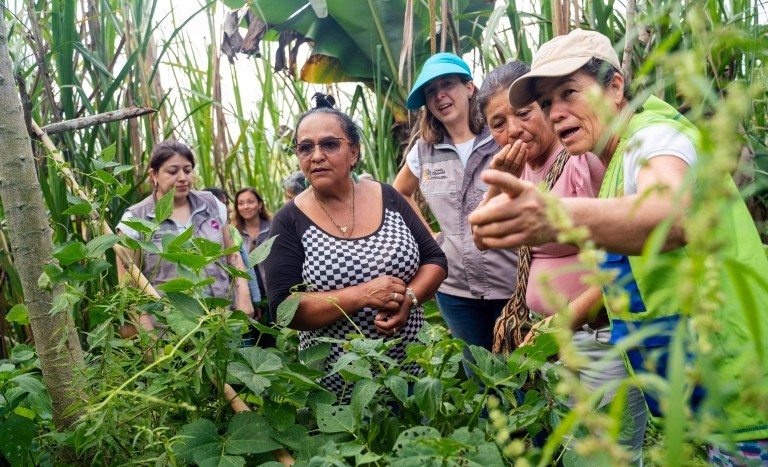Blog
Three ways to boost community engagement to achieve the Global Goals

Over seven years ago, all United Nations Member States adopted the Sustainable Development Goals, the SDGs, a universal call to action to end poverty, protect the planet and ensure that by 2030 all people enjoy peace and prosperity. An ambitious set of 17 goals for the world, they recognize that development must balance social, economic and environmental sustainability. Impact in one area will have impacts in others. We’ve witnessed the interconnected nature of the goals in many ways, including over the past several years experiencing a global health crisis—the Covid-19 pandemic—that has wreaked havoc on a host of SDGs, including good health and wellbeing, elimination of extreme poverty, decent work and economic growth, sustainable cities and more.
Today, we’re halfway to the target date for achieving these massively ambitious goals and, unfortunately, we have a long way to go. In a recently released report on the Sustainable Development Goals, UN Secretary General Antonio Guterres provided a sobering overview of where we stand. “Progress on more than 50 percent of targets of the SDGs is weak and insufficient; on 30 percent, it has stalled or gone into reverse,” he says.
As we approach the annual UN General Assembly meetings later this month, the way forward is weighing heavily on many of our minds, particularly as Covid-19 cases have again begun to surge, the war in Ukraine persists while new conflicts arise, and unprecedented heat, floods and other significant weather events plague vulnerable communities around the world. As governments, private-sector companies and nonprofit organizations redouble their commitments to the SDGs, we can’t lose sight of the need for local communities to be at the helm of developing solutions to challenges that directly impact them. Without this, sustainable development can’t be truly achievable. Communities—whether geographic, institutional, demographic or otherwise—have the local knowledge and expertise that is critical to long-term social, economic and environmental progress. Too often decisions are made in places far from where the impacts are felt. The result can be misaligned goals, ineffective solutions and, in some cases, unintended negative consequences. It is with direct understanding of not only economic and environmental conditions, but also cultural norms, traditions and social structures that development can be not only sustainable, but also regenerative, and can create resilient systems that can adapt to changing conditions.
Here are three ways to ensure communities are engaged and in the driver’s seat of their own development planning and execution.
Before we, as global development practitioners, accept a seat at the table, we must ensure plenty of seats for community members.
This statement likely seems familiar, but one important distinction is that I’m suggesting we decline a seat at the table unless there are already seats for community members, especially groups that have traditionally been marginalized. What’s being done in the name of a community must include the community. This can take various forms. From participatory design to local community grant-making, there are myriad ways to ensure community members’ voices are heard over the din of so many others.
Intentionally integrate locally led development into all aspects of projects.
It isn’t enough for community members to have a representational presence; leadership and participation by members of the community must be integrated into every aspect of projects intended to advance their developmental goals. From conceptualization and design to monitoring and budgeting, it is important to ensure that the idea of community-led development is made manifest through concrete roles and actions. Without a holistic project approach, we risk the conceptual equivalent of tokenism or “impact washing.”
Meet communities where they are, and where they want to be.
It is important to understand communities’ priorities, needs and the local systems in which they operate. We are all familiar with a well-meaning but poorly informed development project that has gone awry, for example, one that delivered new technology for healthcare, but failed to account for the lack of electrification in the health centers. Communities must be given the space to voice their most pressing needs and to engage in the process of addressing them. Listening to learn can eliminate design and implementation failures and lead to better, more impactful work. And most important, we must make this an ongoing conversation instead of a one-time effort, allowing for continuous feedback and adjustment. As time progresses, communities and systems evolve, necessitating change.
Achieving the Sustainable Development Goals is going to take everyone working together, listening to one another and respecting the unique and essential contributions that we each bring to the table, particularly those of community members. At Pact, we are committed to nurturing the inherent potential within communities worldwide, empowering them to flourish, strengthen their resilience and take charge of their own development. We believe even the most ambitious goals are possible when we are intentional about communities leading the way.